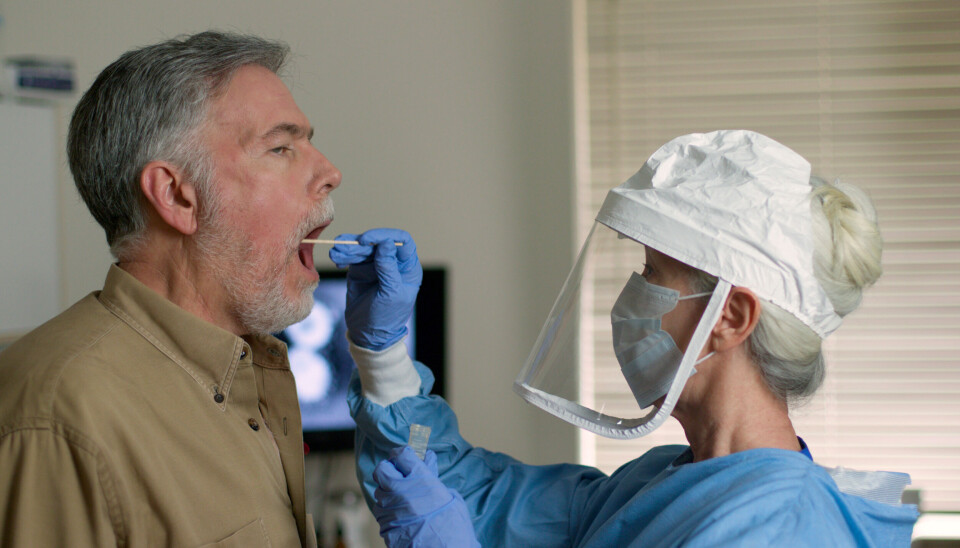-
La Poste to offer drop-off points for used frying pans and saucepans
National recycling scheme organised in partnership kitchenware manufacturer
-
Unpublished drawing by Michelangelo pupil discovered in western France
Artwork valued at €500,000 but sold for €3.1 million at Paris auction
-
Historic Jacques Cousteau vessel to be restored by Florida non-profit
‘Cousteau showed the beauty of the ocean… now it’s our turn to protect it’
Covid France: why are infection rates higher in the southeast?
Case numbers are above the national average of 300 per 100,000 people across Provence-Alpes-Côte d’Azur and Auvergne-Rhône-Alpes

Covid infection rates are generally higher in southern – and particularly southeastern – France than in northern regions, sitting around 400 cases per 100,000 people in all of Provence-Alpes-Côte d’Azur and Auvergne-Rhône-Alpes.
This is higher than the national infection rate, which is today (Wednesday, December 1) at 307 per 100,000 of the population - and, in much of Brittany, Hauts-de-France and Normandy, for example, the rate is still below 200 per 100,000 people.
Much of Occitanie is similarly affected, with only Tarn and Aude – where infection rates are just above 200 cases per 100,000 people – remaining below this countrywide average.
Ardèche in Auvergne-Rhône-Alpes currently has the highest incidence rate in France, with 598 cases per 100,000 people, according to government-approved information service CovidTracker.
CovidTracker’s founder, data scientist Guillaume Rozier, has published a Twitter thread suggesting these elevated rates can, at least in part, be attributed to higher proportions of unvaccinated people in these regions.
À la #TeamInsomniaques qui se demanderait pourquoi le sud-est est plus touché par la vague actuelle pic.twitter.com/CuGtx7Tizv
— GRZ (@GuillaumeRozier) December 1, 2021
The Tweets show two maps of France, one displaying regional infection rates and one regional vaccination rates. As vaccination coverage falls, the more infection rates appear to climb.
Vaccination rates are indeed significantly lower in southeastern France than in parts of the north, with Alpes-de-Haute-Provence recording a coverage of 67% of the population while Manche, Calvados, Finistère and Morbihan all have rates of 81-2%.
Around 75% of the national population have received all required vaccine doses, but in Bouches-du-Rhône, for example, the figure sits at 68%, and at 71% in Vaucluse, according to VaccinTracker.
However, “obviously correlation is not causality,” Mr Rozier added, “and many other parameters can be taken into account (such as climate).”
The relationship between vaccination and infection rates does not always work in the same way, with bigger urban areas usually experiencing higher case numbers.
Other influencing factors might include population size, pollution levels and age structure.
In a later Tweet, Mr Rozier wrote: “Without a change in the progress of the epidemic within the next few days, mid December could become difficult with hospital admissions reaching a similar level to that which we observed one week before the lockdown at the end of 2020.”
Sans changement de la dynamique de l’épidémie d’ici quelques jours, la mi-décembre pourrait être compliquée avec un nombre d’admissions à l’hôpital similaire à ce qu’on observait une semaine avant le confinement de fin 2020. https://t.co/P06tP4W2oc
— GRZ (@GuillaumeRozier) November 30, 2021
Health Minister Olivier Véran also said yesterday (November 30) that: “The average number of daily cases now exceeds 30,000, and could be above that of the peak of the third wave by the end of the week.”
He added, however, that: “There are much fewer serious cases, hospitalisations and deaths” this time. “Hospitals would be overwhelmed if we did not have vaccines.”
Yesterday, 47,177 new Covid cases were recorded in France, and there were just over 10,000 people being treated in hospital for Covid, with 1,824 in intensive care.
Read more: Covid France: 47,000 new cases, what is expected in next few weeks?
According to Santé publique’s Géodes information service, the number of daily hospitalisations is higher than in the departments of Ile-de-France, with 75 people being admitted in the last 24 hours.
It was also higher in Vaucluse than it was in Haute-Garonne, whose population is almost three times the size.
Related stories
Coronavirus: Daily updates on the situation in France
Omicron variant case confirmed in France - on Réunion island
France fifth Covid wave: What changes for workplaces and schools
























